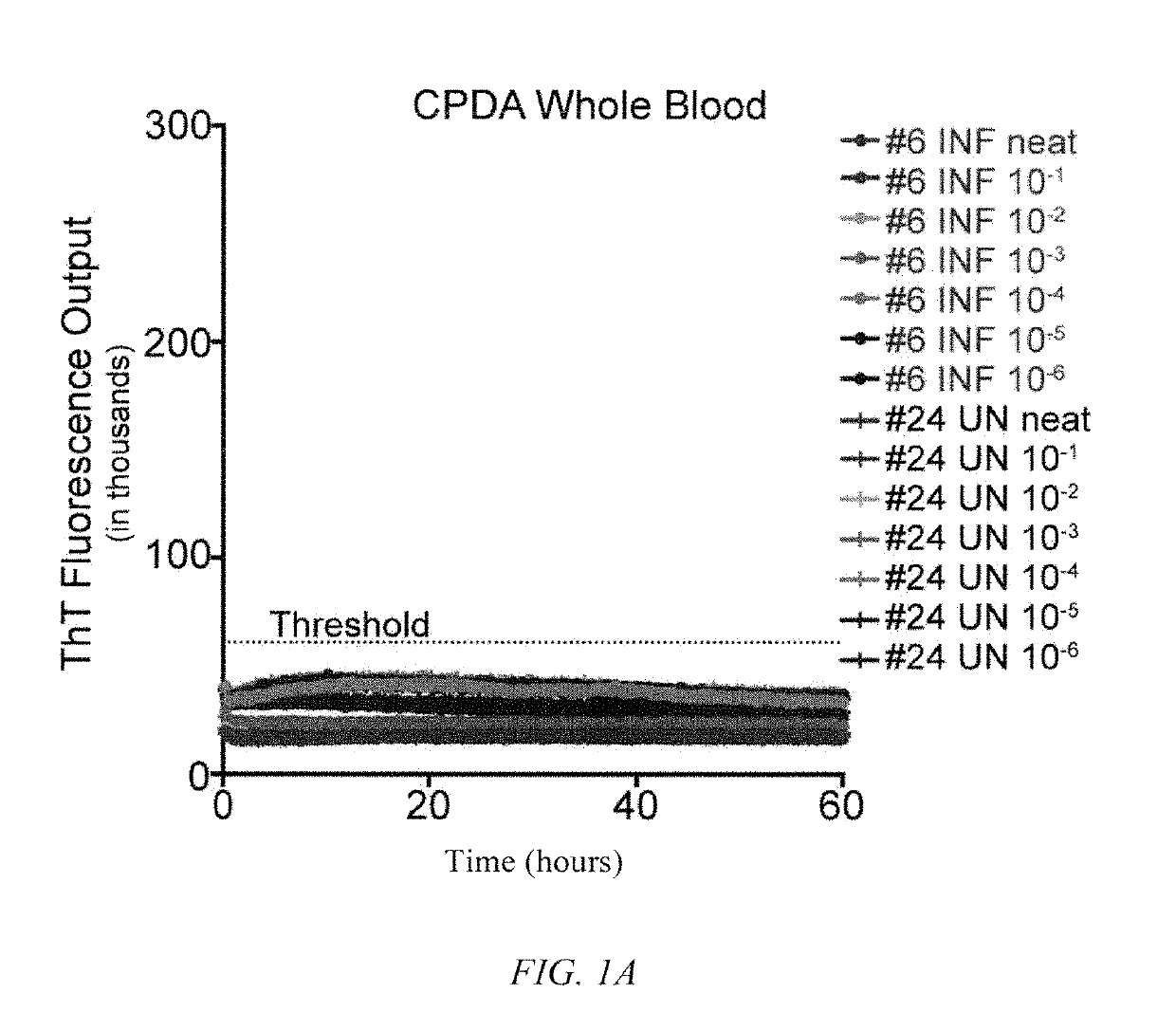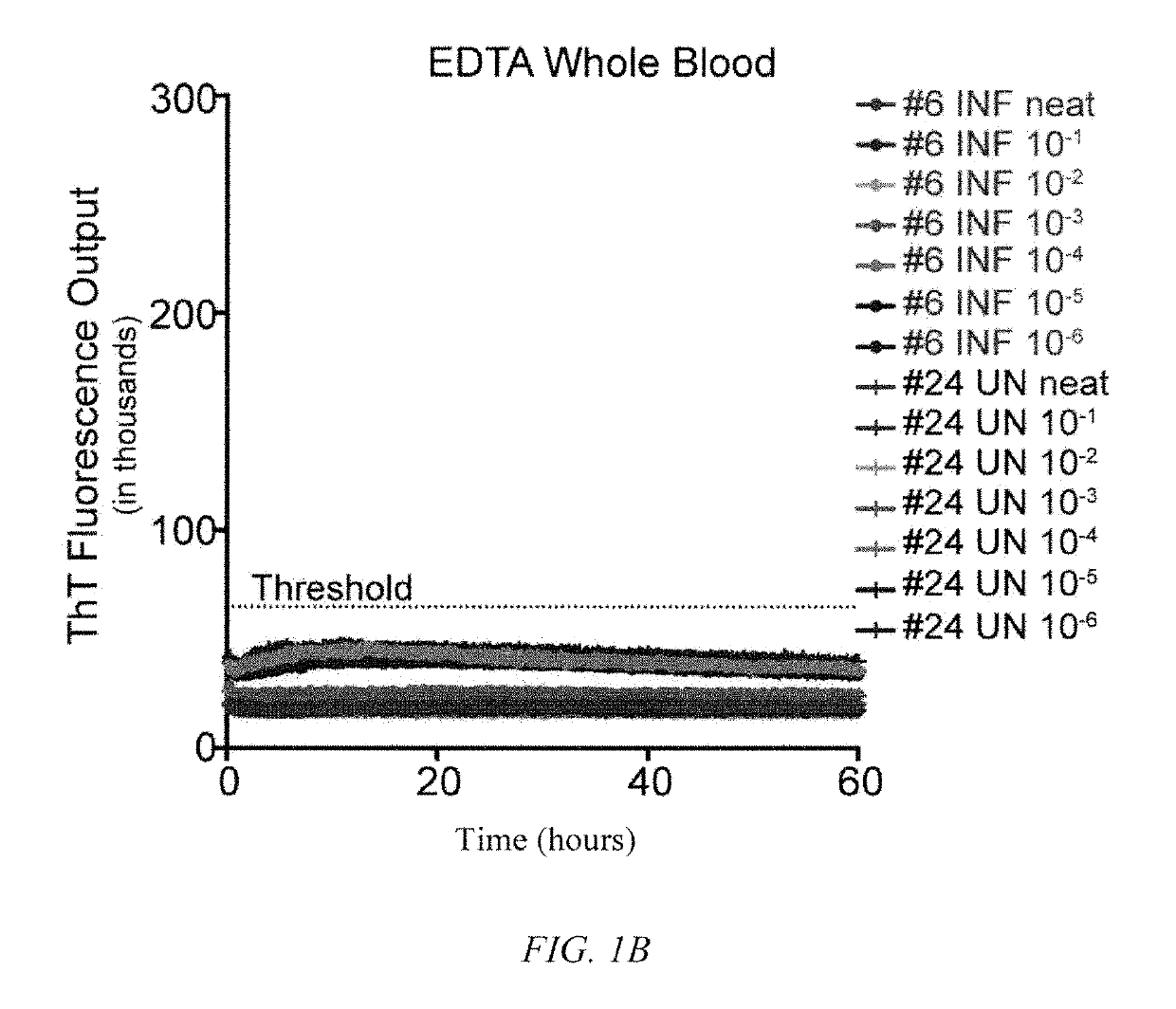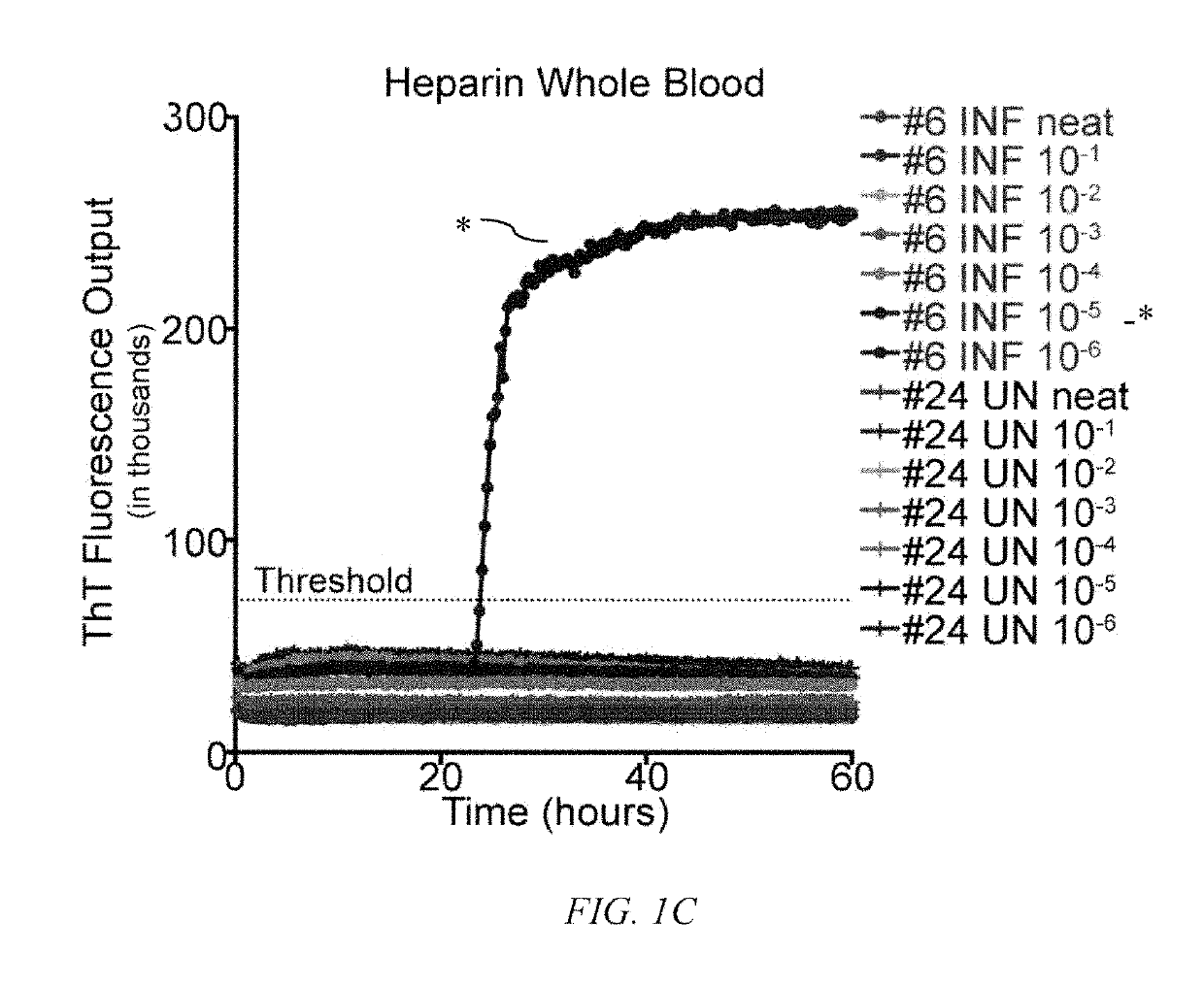In vitro detection of prions in blood
a technology of prions and in vitro detection, applied in the field of infectious agent screening and diagnosis, can solve the problems of many months, animals, cost, etc., and achieve the effects of low prpd, rapid identification and diagnosis, and sufficient sensitivity
- Summary
- Abstract
- Description
- Claims
- Application Information
AI Technical Summary
Benefits of technology
Problems solved by technology
Method used
Image
Examples
example 1
nalysis of Whole Blood Collected in Various Anticoagulants
[0062]To determine the influence of common blood preservation reagents in in vitro PrPD detection assays, we compared the ability of RT-QuIC to amplify CWD prions in cervid whole blood preserved in CPDA, EDTA or heparin. Samples were run in serial dilutions (100-10−6) in the RT QuIC assay to determine the optimal dilution for PrPD detection. While RT-QuIC PrPC converting activity was observed in heparinized blood from CWD-infected deer (½ replicates in one dilution; 10−5) (FIG. 1C), PrPC converting activity was not detected in CPDA (FIG. 1A) or EDTA (FIG. 1B) preserved blood from the same animal or any blood collected from sham-inoculated deer (FIGS. 1A-1C). All subsequent RT-QuIC analysis was conducted on whole blood harvested in heparin.
[0063]Precedence for hematogenous spread of prions via transfusion has been well established with various TSEs, including scrapie [Andreoletti, O., et al., PLoS Pathog, 2012. 8(6): p. e10027...
example 2
nalysis of Fresh Versus Frozen Whole Blood
[0065]In order to determine if historical blood samples were adequately preserved to initiate PrPC converting activity in RT-QuIC, whole blood was collected from contemporary naïve and CWD112 infected white-tailed deer and compared as fresh versus frozen samples. Samples were processed in various dilutions ranging from undiluted to 10−6 to determine the optimal dilution for PrPD detection using frozen whole blood in the RT-QuIC assay. While PrPC converting activity was detected in fresh whole blood (FIG. 2A), blood that had been processed through the freeze-thaw procedure yielded higher and more consistent detection of prion converting activity (2 / 2 replicates in each of four dilutions) (FIG. 2B). PrPC converting activity was not observed in wells containing only substrate or naïve cervid blood. All subsequent RT-QuIC analysis included heparinized whole blood that had undergone four freeze-thaw cycles.
[0066]To assess the feasibility of using...
example 4
omparison of CWD-Positive Brain Versus NaPTA Concentrated Whole Blood
[0071]To evaluate the levels of PrPD present in NaPTA concentrated whole blood samples, PrPC converting activity was compared to that detected in serial dilutions of CWD-positive white tailed deer brain (FIG. 4). NaPTA treated whole blood (10 ml starting volume of whole blood) diluted to 10−2 demonstrated PrPD levels approximately equivalent to that measured in 10−6-10−7 dilution of CWD-positive brain. Equivalence was determined by comparison of the time to positivity for whole blood and brain samples.
[0072]Many groups have developed quantitative in vitro methodologies to analyze the levels of PrPD present in various tissues and bodily fluid samples. Murayama et al. [Murayama, Y., et al., J Gen Virol, 2007. 88(Pt 10): p. 2890-8.] used PMCA to establish a direct comparison of PrPD levels in buffy coat and plasma to PrPD levels seen in serial dilutions of TSE-infected brain by analyzing which round of PMCA samples be...
PUM
| Property | Measurement | Unit |
|---|---|---|
| temperature | aaaaa | aaaaa |
| temperature | aaaaa | aaaaa |
| temperature | aaaaa | aaaaa |
Abstract
Description
Claims
Application Information
 Login to View More
Login to View More - R&D
- Intellectual Property
- Life Sciences
- Materials
- Tech Scout
- Unparalleled Data Quality
- Higher Quality Content
- 60% Fewer Hallucinations
Browse by: Latest US Patents, China's latest patents, Technical Efficacy Thesaurus, Application Domain, Technology Topic, Popular Technical Reports.
© 2025 PatSnap. All rights reserved.Legal|Privacy policy|Modern Slavery Act Transparency Statement|Sitemap|About US| Contact US: help@patsnap.com



